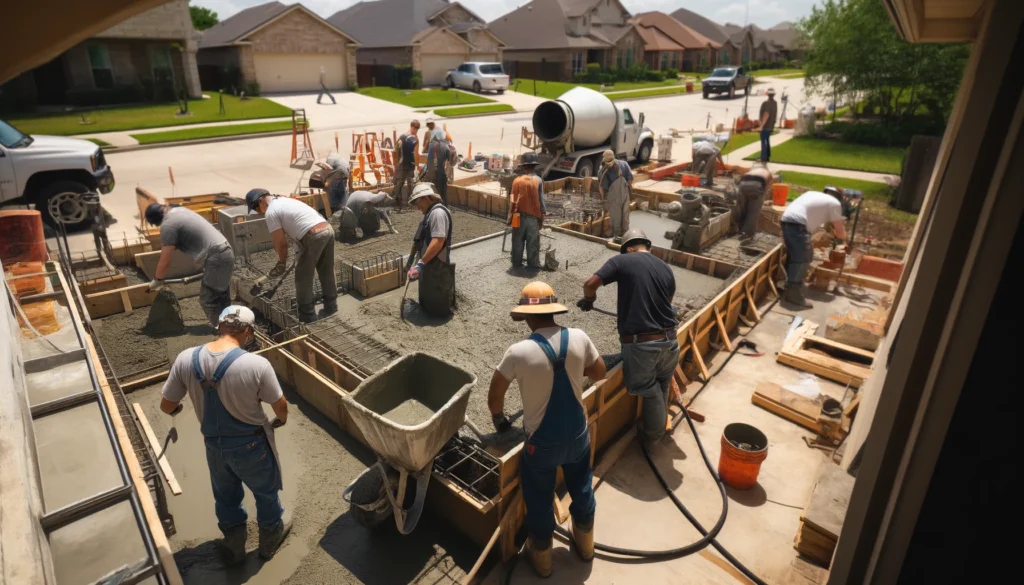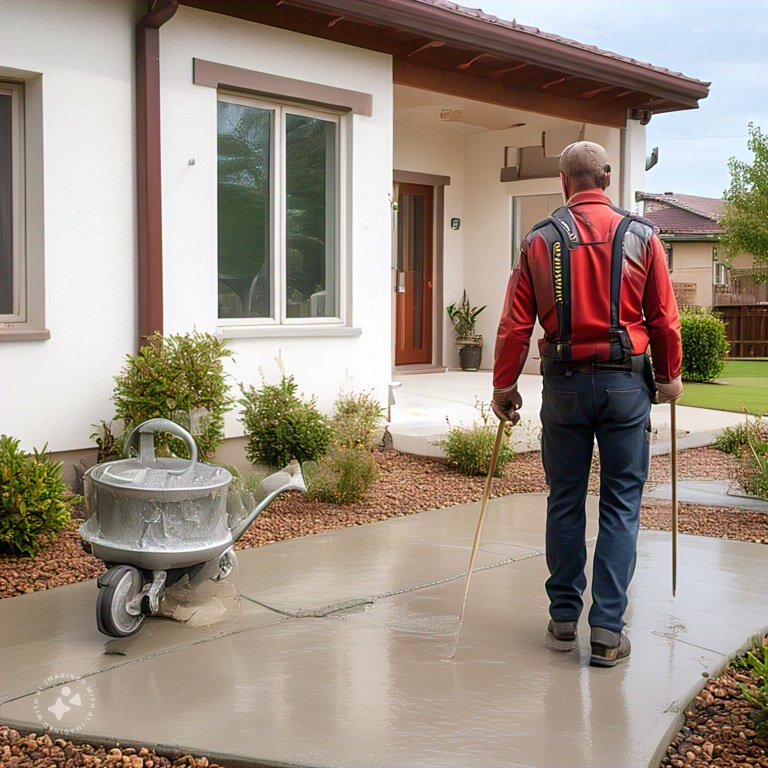Outline:
- Introduction
- Importance of Cement in Construction
- Brief Overview of Cross Construction Services, Houston, Texas
- Understanding Cement
- What is Cement?
- Different Types of Cement
- Tools and Materials Needed
- Essential Tools for Laying Cement
- Required Materials
- Preparation Steps
- Site Inspection
- Measuring and Marking
- Setting Up Formwork
- Mixing the Cement
- Proper Proportions
- Mixing Techniques
- Laying the Cement
- Pouring the Cement
- Spreading and Leveling
- Finishing Touches
- Curing the Cement
- Importance of Curing
- Methods of Curing
- Common Challenges
- Weather Conditions
- Incorrect Proportions
- Inadequate Mixing
- Safety Precautions
- Personal Protective Equipment (PPE)
- Safe Handling of Materials
- Cost Considerations
- Budgeting for Cement Projects
- Cost of Materials and Labor
- DIY vs. Hiring Professionals
- Pros and Cons of DIY
- Benefits of Hiring Professionals
- Cross Construction Services: What We Offer
- Overview of Services
- Customer Testimonials
- Case Studies
- Successful Projects in Houston, Texas
- Conclusion
- Recap of Key Points
- Final Thoughts on Laying Cement
- FAQs
- How long does it take for cement to set?
- Can I lay cement in cold weather?
- What is the best type of cement for driveways?
- How thick should a cement slab be?
- How do I know if my cement mix is right?
How Hard is it to Lay Cement? A Comprehensive Guide by Cross Construction Services, Houston, Texas
Introduction
Cement is the backbone of modern construction, serving as a critical component in building everything from skyscrapers to sidewalks. For residents and businesses in Houston, Texas, understanding the process of laying cement can be particularly valuable. This guide, brought to you by Cross Construction Services, aims to demystify the process, providing insights whether you’re a DIY enthusiast or considering hiring professionals.
Understanding Cement
What is Cement?
Cement is a fine powder that, when mixed with water, forms a paste that hardens and binds materials together. It is a primary ingredient in concrete and mortar, essential for construction.
Different Types of Cement
There are various types of cement, each with specific properties suited for different applications:
- Ordinary Portland Cement (OPC)
- Portland Pozzolana Cement (PPC)
- Rapid Hardening Cement
- Low Heat Cement
- Sulphate Resisting Cement
Tools and Materials Needed
Essential Tools for Laying Cement
To lay cement effectively, you’ll need:
- Shovels
- Wheelbarrows
- Cement mixers
- Trowels
- Leveling tools
- Safety gear (gloves, goggles, masks)
Required Materials
Besides cement, you’ll need:
- Sand
- Gravel
- Water
- Reinforcement materials (like rebar)
Preparation Steps
Site Inspection
Inspecting the site is crucial to ensure it’s suitable for laying cement. Check for any debris, uneven ground, or potential drainage issues.
Measuring and Marking
Accurate measurements and clear markings are vital. This helps in defining the area and ensuring uniform thickness.
Setting Up Formwork
Formwork holds the cement in place until it hardens. It should be sturdy and properly aligned.
Mixing the Cement
Proper Proportions
Getting the right mix is key. A common mix ratio is 1 part cement, 2 parts sand, and 3 parts gravel, with enough water to achieve a workable consistency.
Mixing Techniques
Use a cement mixer for larger projects or mix by hand for smaller ones. Ensure the mix is even and free of lumps.
Laying the Cement
Pouring the Cement
Pour the cement into the formwork, ensuring even distribution.
Spreading and Leveling
Use a trowel or a straightedge to spread and level the cement. This ensures a smooth and even surface.
Finishing Touches
Apply finishing techniques like floating and troweling to achieve the desired surface texture.
Curing the Cement
Importance of Curing
Curing ensures the cement reaches its full strength. It involves maintaining moisture in the cement for a specific period.
Methods of Curing
- Water Curing: Keeping the surface wet
- Sealing: Applying curing compounds
- Covering: Using wet coverings like burlap
Common Challenges
Weather Conditions
Extreme weather can affect cement curing. Hot weather can cause rapid drying, while cold weather can slow down the process.
Incorrect Proportions
Using the wrong mix proportions can weaken the cement.
Inadequate Mixing
Poorly mixed cement can lead to weak spots and structural issues.
Safety Precautions
Personal Protective Equipment (PPE)
Always wear PPE, including gloves, goggles, and masks, to protect against dust and chemical exposure.
Safe Handling of Materials
Handle materials carefully to avoid injuries and ensure a clean work environment.
Cost Considerations
Budgeting for Cement Projects
Plan your budget carefully, considering the cost of materials, tools, and labor.
Cost of Materials and Labor
Prices can vary, so get multiple quotes to ensure you’re getting the best deal.
DIY vs. Hiring Professionals
Pros and Cons of DIY
DIY can be cost-effective but requires time, effort, and skill.
Benefits of Hiring Professionals
Professionals bring expertise, efficiency, and quality assurance to the project.
Cross Construction Services: What We Offer
Overview of Services
Cross Construction Services offers comprehensive cement laying services, from preparation to finishing.
Customer Testimonials
Our satisfied customers in Houston, Texas, speak of our commitment to quality and service.
Case Studies
Successful Projects in Houston, Texas
We’ve completed numerous successful projects, showcasing our expertise and reliability.
Conclusion
Laying cement is a complex task that requires precision, knowledge, and the right tools. Whether you’re tackling a DIY project or considering professional help, understanding the process is crucial. Cross Construction Services is here to assist with expert services tailored to your needs.
FAQs
How long does it take for cement to set?
Cement typically takes 24 to 48 hours to set enough to walk on, but it can take up to 28 days to reach its full strength.
Can I lay cement in cold weather?
Yes, but you need to take special precautions, such as using warm water in the mix and covering the cement to protect it from freezing temperatures.
What is the best type of cement for driveways?
Ordinary Portland Cement (OPC) is commonly used for driveways due to its strength and durability.
How thick should a cement slab be?
The thickness of a cement slab depends on its use, but a common thickness for driveways and patios is 4 inches.
How do I know if my cement mix is right?
The mix should have a smooth, workable consistency without being too runny or too dry. Testing a small batch before full-scale mixing can help ensure the proportions are correct.


